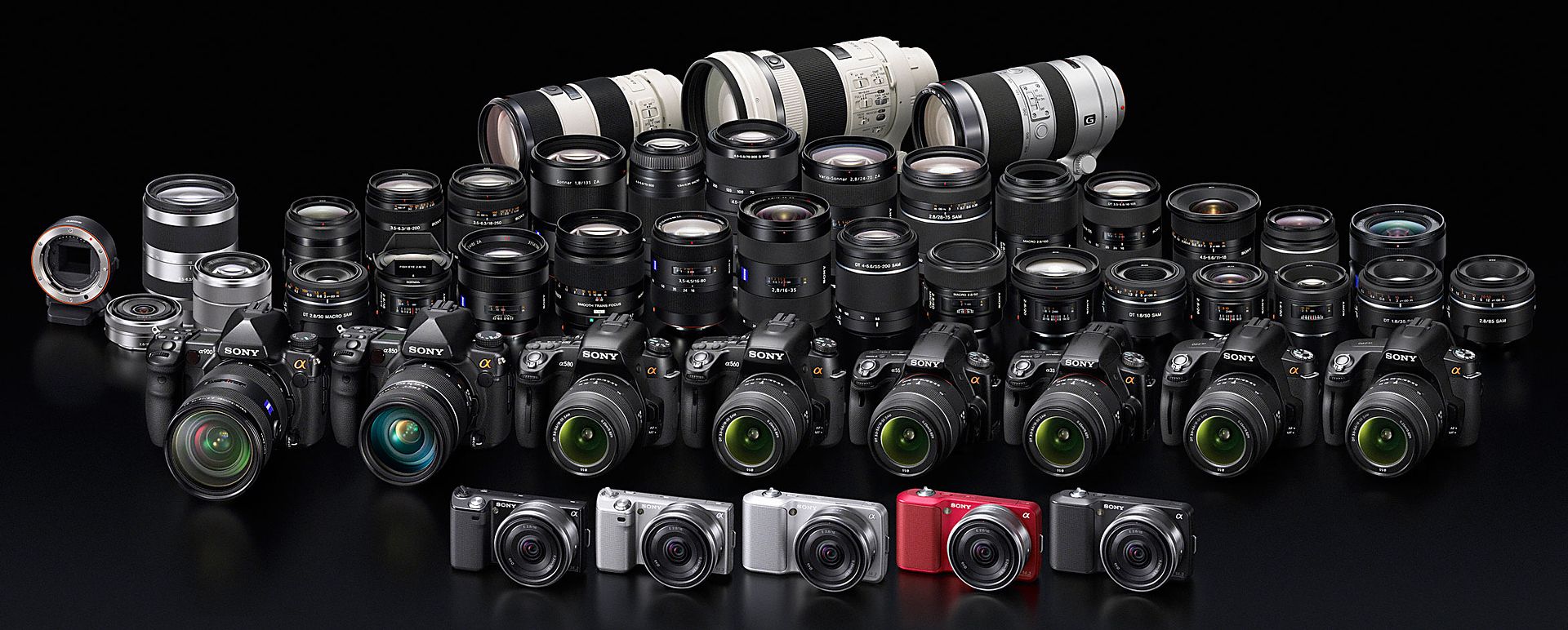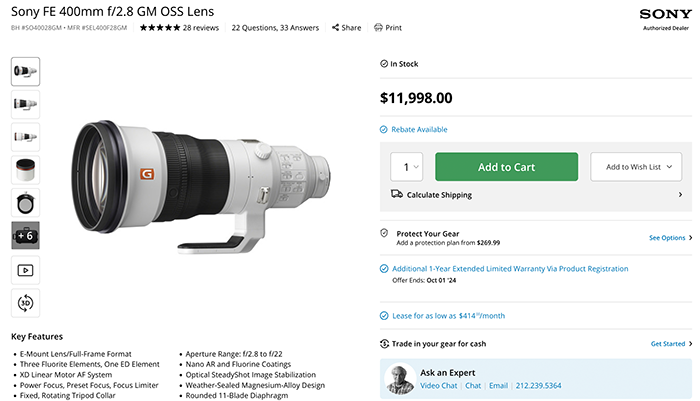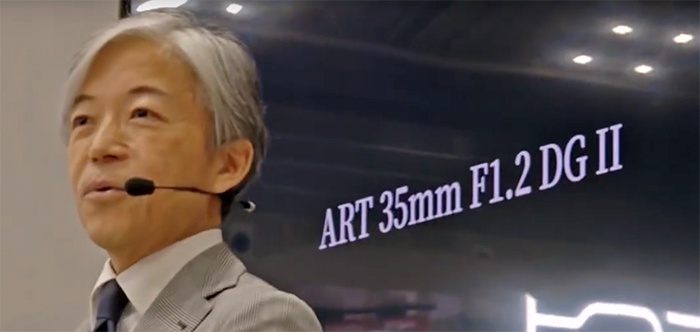Sony: Reinventing Photography One Camera Market Niche at a Time (Guest post by Andrew Michael Buckmaster).

The following article is a Guest Post from Andrew Michael Buckmaster (virtualphotographystudio.com). You can submit articles to be posted on SAR at sonyalpharumors@gmail.com.
—-
Gone are the days when photography enthusiasts really only considered Canon and Nikon the best choices for cameras. Today’s Sony Camera, which comes in numerous iterations, has a lot going for it. And, as the company continues to expand its range with complex full-frame and SLT cameras, it’s also taking into consideration the emerging world of smartphone photography, by releasing groundbreaking accessories. Take a look at what Sony has done (and continues to do) for the world of picture taking.
The 3 Sony camera tiers
Sony Cybershot
Until rather recently, the Sony Cybershot line was solely dedicated to low and mid-range point-and-shoot cameras. The Cybershot tier seems to be changing with the introduction of the RX line of higher-end devices into the mix. Aspiring photographers have plenty of good choices to be made from this range depending on what they’re after. The Sony HX200V, for instance, is great for travel photographers, thanks to its 30x optical zoom. The HX300 comes with an amazing 50x optical zoom and has got a truly versatile built-in lens. It has a 1/2.3 inch sensor, which means it’s not quite DSLR quality after all is said and done. But, don’t knock the HX300 either. Then there’s the 24.3 MP non-zoom Sony RX1, a full-frame sensor camera. This model has ‘upped the ante’ on this segment. It’s full-frame, but also compact enough to carry around in your pocket – a must-have for photo enthusiasts thinking of going pro.
Sony Alpha DSLR
Is the Sony Alpha DSLR camera really a DSLR, or is it not? Technically speaking, it’s not, since it comes with a fixed translucent mirror, which makes their official name Single Lens Translucent cameras, or SLTs. What does this mean? That means you can use phase detection when auto-focusing irrespective of whether you’re composing the image onscreen or in the viewfinder. In other words, you’ll be able to detect the contrast quicker than with a traditional SLR camera. And, as a logical consequence, you also get an electronic viewfinder (as opposed to an optical viewfinder). So, what’s your best bet? There are plenty of cameras to choose from: you could, for instance, spring for the Sony Alpha a37 if you’re a novice or a would-be enthusiast on a budget. The a65, which is cheaper than the a77, is something of a bargain with full-time phase detection AF. Finally, the a99 is the first ever full-frame camera with an interchangeable lens as well as an EVF. It’s great for capturing details and low image noise.
Sony Alpha NEX
The experts tend to agree that the Sony Alpha NEX Camera range has managed to provide photo enthusiasts with something yet unheard of: the Sony NEX-7, a compact camera that also offers great control over settings, and a nearly impeccable high-res built-in EVF. And that’s not even the best part: the NEX-7 has a 24.3 MP APS-C sensor. Is this really the best camera Sony has ever made? It certainly seems so. For a hybridized version, you could also take the NEX-6 for a spin: it’s got the great shutter speed and image quality, but it’s far more user-friendly in terms of controls. And, yes, it’s also more affordable.
Turning your Sony Android camera into a point-and-shoot
Taking pictures with the Sony XperiaZ/Xperia Z1S smartphones
The Sony Xperia Z series really proved to be a game changer, in terms of Sony’s position on the smartphone camera market. While previous attempts in conjunction with Ericsson yielded nearly disastrous results, this time around Sony got many things right. Complaints still persist regarding the ISO, low light performance, and the absence of a shutter button on the Xperia Z. However, the phones are completely waterproof, which begs a comparison with the famed Sony waterproof camera. The back camera on the Sony Xperia Z is an impressive 13.1 MP, with 4128 x 3096 shooting capabilities. The Xperia Z1S comes with 20.7 MP and produces images that measure 5248 x 3936 (at a 4:3 aspect ratio). No doubt about it, the Z1S has the superior camera to most competitors and that comparison is consistent in all lighting conditions. While the Xperia Z is average at best (even in full blown natural light), the Z1S far beats Samsung’s offer in this department. It even comes close to the iPhone and Nokia Lumia experience.
A lot of clarity and sharpness of detail exists in pictures taken with the Z1S – although the 800 ISO limit in 20 MP mode is a bit of a letdown (you can go all the way up to 6400 when shooting in 8 MP). Reviewers would also have enjoyed HDR mode and burst modes in 20 MP, but what the Z1S is able to do is impressive nonetheless. And while the Z1 does leave a lot to be desired in terms of image quality in various light conditions, you can still tell it’s powered by the new Exmor Sensor, which places the Xperia a definite step ahead of the competition on the smartphone camera market.
The DSC-QX10 and QX100 wireless camera lens for smartphones
A lot has been written about Sony’s groundbreaking foray into the world of wireless camera lens accessories for smartphones. The lens, which is also a standalone camera of its own, is also compatible with the iPhone. Now, since it’s the first attempt of this sort, it’s laudable even for the kind of courage such an effort entails. Also, the camera lens comes with some very tangible pluses. These pluses include:
- Design. The QX-10 camera is light, easy to carry around in one’s pocket (though not the same can be said of the comparatively larger QX-100) and the clamping system of the lens is secure. It also comes with wireless connectivity features, which means it can be used entirely on its own. To boot, there’s a standard tripod mount, a shutter button, and two embedded mics for stereo sound recording.
- The 18-megapixel Exmor RCMOS ½.3 inch sensor with the 10x optical zoom and Sony G lens on the QX-10 (carried over from Sony’s WX2200 point-and-shoot camera). There are plenty of smartphones that take good photos out there, but the 10x optical zoom is something that these sleek devices can’t offer on their own. The QX-100 steps the game up a notch with a wide-aperture Carl Zeiss Vario-Sonnar T lens.
- Wi-Fi connectivity and remote control capabilities. This is great for families or groups of friends who want to have their picture taken together.
- Picture quality. Yes, this accessory makes pictures taken with your smartphone absolutely indistinguishable in terms of quality from those taken with a standard point-and-shoot camera. The focus is great, there is more detail in the pictures, and the colors tend to be more vibrant.
Of course, there are downsides, too. Here are some of our biggest qualms with the groundbreaking device:
- The Wi-Fi overload risk. When using the camera at a major event (such as a sporting event or concert, for instance), a lag develops between camera and smartphone, which can make the device’s speed less than desirable.
- The software. Since the release of the camera lens last year, Sony has also put out several updates to the device’s software, which have significantly improved the experience. However, the PlayMemories app which the camera uses can take a whole lot of time to connect and enable shooting (think up to 10 seconds). Missed a great shot? Well, sorry about that…
All in all, would we recommend this gadget? Absolutely. It’s not rocket science to figure out that some smartphone users are in it for the pictures and would prefer to replace the older style point and shoot camera with a smart phone. Not every smart phone is up to the challenge of replacing a dedicated camera. But, the QX10 and QX100 seeks to do exactly this by adding to your preexisting phone. The devices still come with some limitations, but they clearly have potential and a lucrative market segment to build upon.
About Me:
My name is Andrew Buckmaster. I love photography and technology. When I’m not busy stealing my wife’s Sony point and shoot for that perfect shot of the countryside around beautiful Lancaster, PA, I love blogging about photography on http://virtualphotographystudio.com/. I work for an online marketing and business consultation company.


